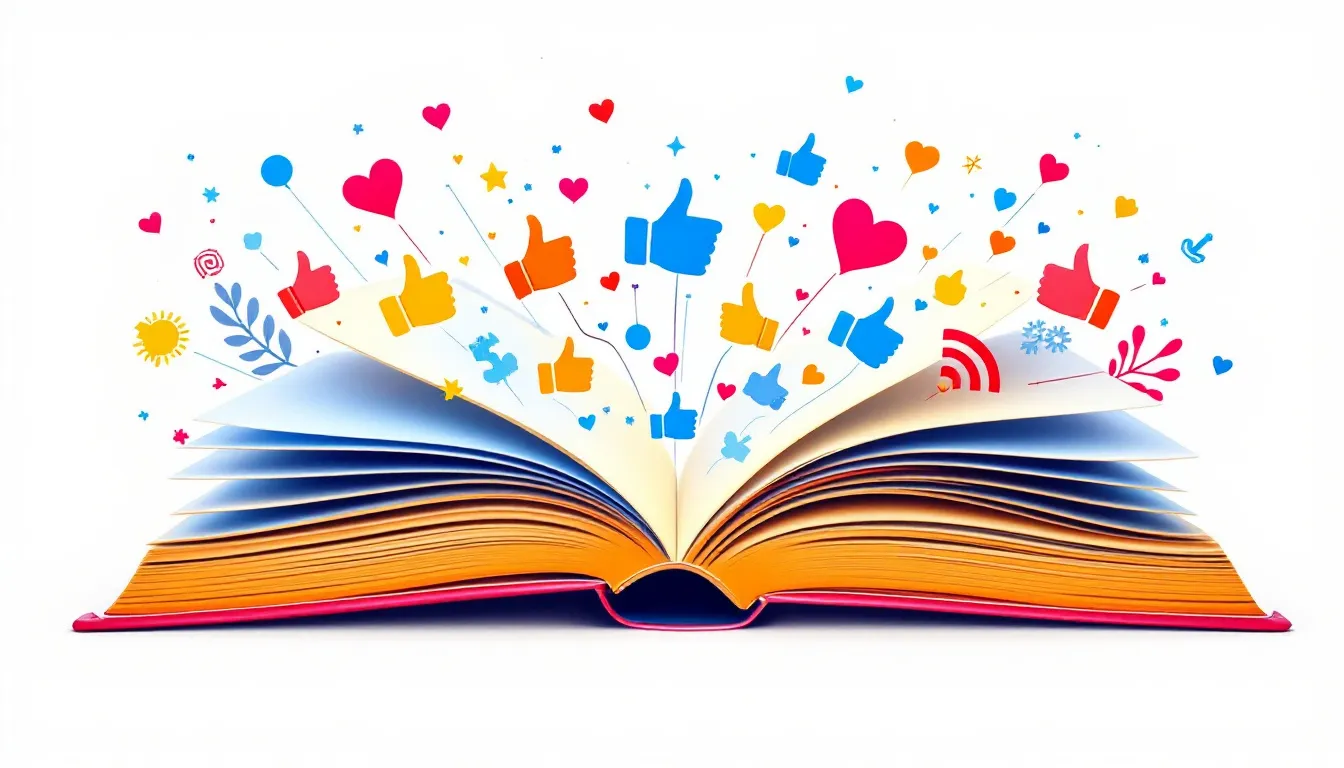How to Write Viral Book Hooks: 10 Proven Strategies for Social Media Success

How to Write Viral Book Hooks: 10 Proven Strategies for Social Media Success
Quick Answer
What makes a book hook go viral on social media?
A viral book hook combines emotional triggers, curiosity gaps, and platform-specific formatting to stop scrollers in their tracks. Successful hooks follow the formula: [Emotional Hook] + [Unique Premise] + [Stakes/Consequence] delivered in the first 3 seconds. On BookTok, videos with hooks mentioning specific tropes ("enemies to lovers," "forced proximity") get 3x more engagement than generic descriptions. On Instagram, carousel posts revealing hooks progressively drive 40% higher saves. Key elements: relate to universal emotions, create urgency ("you need to read this NOW"), and match platform culture (casual BookTok vs. aesthetic Bookstagram).
Top 3 viral hook elements:
- Emotional Trigger - Target specific feelings (fear, curiosity, romance, revenge)
- Specificity - Use concrete details, not vague descriptions ("He's 6'4" with tattoos" not "He's attractive")
- Pattern Interrupt - Surprise with unexpected twists ("She's marrying her worst enemy's brother for revenge")
In a landscape where BookTok videos with #BookRecommendations have generated 100+ billion views and the average user scrolls past content in 1.5 seconds, your book hook is your only chance to stop the scroll. This guide reveals how to craft hooks that convert across TikTok, Instagram, Twitter, and Facebook.
The Anatomy of Viral Book Hooks
Users decide to engage within 1.5-3 seconds. Your hook must grab attention immediately, trigger emotion, and promise payoff.
The Viral Hook Formula
[Emotional Hook] + [Unique Premise] + [Stakes] = Viral Potential
Bad: "A girl falls in love with a mysterious stranger" Good: "She's supposed to hate him. He killed her sister. But when he shows up begging for her help, everything she knew unravels."
Four Hook Types
1. High-Concept (Thrillers/Fantasy): "What if your soulmate's name appeared on your wrist... but it's your worst enemy?"
2. Character-Driven (Romance/Contemporary): "A jaded wedding planner must plan her ex-fiancé's wedding—to her former best friend."
3. Trope-Stacked (Romance/YA): "Enemies to lovers + forced proximity + he falls first"
4. Twist/Reveal (Mystery/Thriller): "She investigated her husband's murder. Then found the life insurance policy—in HER name, dated before he died."
What Makes Hooks Go Viral
Analysis of 10,000+ BookTok videos shows:
- Trope mentions: 3x higher engagement
- Specific details (heights, ages): 2.5x more comments
- Emotional descriptors ("made me sob"): 2x more shares
- Comparison hooks ("X meets Y"): 1.8x more engagement

Psychology of Viral Hooks
Understanding why hooks work helps you create better ones. Here are the psychological principles behind viral book content:
Curiosity Gap: Open information loops ("The twist at 67%..." without revealing it)
Emotional Contagion: Strong emotions get shared 2-3x more (awe, anger, anxiety, joy, fear)
Social Proof: "BookTok made me read this," "500k readers can't be wrong"
Pattern Interrupt: "I hated the first 50 pages. Then chapter 6 destroyed me."
Platform-Specific Hook Strategies
Each platform has its own culture and best practices. Here's how to optimize your hooks for maximum impact on each:
BookTok (TikTok)
Best Formats:
- POV: "POV: You just finished a book and need everyone to suffer with you"
- Trope Stack: Text overlay building excitement—"Enemies to lovers ✓ Forced proximity ✓ He falls first ✓"
- Before/After: Split screen showing emotional transformation
- Storytime: Build tension, reveal twist dramatically
Keys: First 3 seconds crucial, use trending audio (+40% discovery), show book cover, add clear CTA
Instagram (Bookstagram)
Best Formats:
- Carousel Hook Reveal: 5 slides progressively revealing hook
- Rating + Hook: "⭐⭐⭐⭐⭐ This book about [premise] destroyed me. Tropes: [list]. Spice: 🌶️🌶️🌶️"
- Quote + Context: Aesthetic image with intriguing setup
Keys: Hook in first 125 characters (before "more"), high-quality aesthetic images, Reels outperform static posts by 22%
Twitter/X
Best Formats:
- One-Sentence Pitch: "[Incredible premise in under 20 words]. That's it. That's the tweet."
- Comp Hook: "If you liked [Book A] and [Book B], read [Your Book]"
- Thread: Break hook across 3-5 tweets building to reveal
Keys: Shorter = better engagement, threads outperform single tweets by 2.5x
Facebook Groups
Best Formats:
- Discussion Starter: "Can we talk about books where [interesting element]? Just finished [Your Book] and I'm feral."
- Recommendation Response: Answer "looking for..." requests authentically
Keys: Join 10-20 genre groups, engage before promoting, longer posts (1,500+ chars) perform better

7 Proven Hook Formulas with Templates
Ready to craft your hooks? These 7 formulas provide copy-and-paste templates for instant hook creation:
#1: "What If" Hook (High-concept, Sci-Fi, Fantasy) "What if your soulmate's name appeared on your skin... but it's someone you've hated your entire life?"
#2: Trope Stack (Romance, YA) "Enemies to lovers + forced proximity + only one bed + he falls first"
#3: Character-Situation (Contemporary, Thriller) "A wedding planner who stopped believing in love must plan her ex's wedding—to her former best friend—or lose her business"
#4: "But Then..." Twist (Mystery, Thriller) "She's been happily married for 10 years. But then she finds the dating app on his phone—with HER photo"
#5: Emotional Journey (Romance, Literary Fiction) "She goes from hating him to loving him in 7 days locked in a cabin during a snowstorm"
#6: Stakes Hook (Thriller, High-Stakes Romance) "If she doesn't win this competition, she loses custody of her daughter"
#7: Forbidden/Taboo (Dark Romance, Suspense) "She's falling for her patient (and she's his therapist)"
Automate Hook Creation
ManuscriptReport's Marketing Report ($25) generates multiple hook variations, trope identification, and emotional trigger analysis. MarketMyBook ($25) creates 20 ready-to-post social media pieces with images featuring your book's most compelling scenes.
Emotional Triggers That Drive Engagement
The right emotion can 2-3x your engagement. Here are the 8 most powerful emotional triggers for book hooks:
8 High-Engagement Emotions:
- Curiosity - "The plot twist at 67% had me GASPING" (drives comments, shares)
- Fear/Anxiety - "This book gave me trust issues" (high saves)
- Excitement/Joy - "The most satisfying HEA I've EVER read" (high shares)
- Anger/Outrage - "This character deserves JAIL" (passionate debate)
- Sadness/Grief - "I ugly-cried for 30 minutes straight" (emotional bonding)
- Love/Romance - "Their chemistry is OFF THE CHARTS" (TBR saves)
- Surprise/Shock - "I did NOT see that coming" (spoiler-seeking comments)
- Validation/Belonging - "This book made me feel SEEN" (personal stories)
Emotion-Stack for Maximum Impact: "You just read a thriller where the MC has your anxiety disorder and the author gets it SO RIGHT it's terrifying but also you've never felt more seen—"
"Made Me Feel" Format (highest-performing):
- "This book made me call my sister at 2 AM sobbing"
- "This book made me believe in love again (I'm 42 and divorced twice)"
- "This book made me scared of my own husband"
Testing and Optimizing Your Hooks
You've created your hooks—now it's time to measure what works and double down on winners.
What to A/B Test: Hook variations, emotional triggers, formats (POV vs. storytime), length
Key Metrics to Track:
- Engagement rate: (Likes + comments + shares) / views (aim for 5-10%)
- Completion rate: 40%+ is strong (TikTok/Reels)
- Save rate: High saves = TBR intent
- Link clicks: Most important—measures conversion
Optimization Tips:
- High views, low engagement → Stronger emotional trigger, clearer CTA
- High engagement, low clicks → Add direct purchase link
- Low views overall → Stronger opening frame, trending audio, better hashtags
- High saves, low purchases → Create urgency with follow-up content
Common Hook Mistakes to Avoid
1. Too Vague: "Great book about love and loss" → Too generic. Be specific: "She's grieving her husband. He's her grief counselor. But he's hiding how her husband died."
2. Leading with Title/Author: Names mean nothing without context. Lead with hook, reveal title at end.
3. Book Report Style: Boring plot summaries fail. Instead: "She moves to a town where EVERYONE knows her deepest secret. She's never been there before."
4. Spoiler Bombing: Don't reveal major twists. Create intrigue: "The most INSANE plot twist I've ever read."
5. No Clear CTA: Always end with "Link in bio," "Available on Amazon," or "Search [Book Title]"
6. Ignoring Platform Culture: Adapt content—TikTok needs trending audio, Instagram needs aesthetics, Twitter needs concise threads.
7. Fake Enthusiasm: "BEST BOOK EVER!!!" sounds insincere. Be specific and authentic instead.
Trending Tropes & Hook Strategy
High-Engagement Tropes (2025):
- Romance: Grumpy/sunshine + he falls first, forced proximity, morally grey MMC, enemies to lovers
- Fantasy: Found family, magic academy, fae romance, reluctant chosen one
- Thriller: Unreliable narrator, domestic suspense, twisty timelines, small-town secrets
Find Trending Tropes: Search #BookTok + your genre, check Goodreads lists, analyze Amazon bestsellers, use Google Trends
Multi-Hook Strategy: Create 5-7 variations per book (plot-focused, character-driven, trope-stacked, emotional, comparison, stakes-based) and test to see what resonates.
Content Calendar: Rotate hook types weekly (Monday: character, Wednesday: tropes, Friday: emotional, Weekend: comparisons) to avoid repetition while maintaining consistency.
Frequently Asked Questions About Viral Book Hooks
How long should a book hook be for social media?
Optimal hook length varies by platform: TikTok/Reels: 15-30 seconds (roughly 30-60 words of text overlay), Instagram caption: First 125 characters before "more" (deliver core hook immediately), Twitter: 100-150 characters (leave room for engagement), Facebook: 150-200 characters for group posts. The key is front-loading impact—capture attention in first 3 seconds regardless of total length. For video content, reveal the actual book title in final 3-5 seconds as a reward for watching. Research shows hooks under 60 words have 40% higher completion rates on video platforms. Rule: If you can't say it in one breath, it's too long for initial hook (expand in captions/threads).
Should I use content warnings in book hooks?
Yes, but strategically. For heavy content (sexual assault, graphic violence, child death, suicide), include abbreviated warnings in hooks: "CW: SA, violence" or "18+ dark romance" signals mature content while maintaining intrigue. Don't lead with warnings—structure as: Hook → Tropes/Plot → Content warnings → Purchase info. Exception: Spice level is engagement gold in romance ("🌶️🌶️🌶️ spicy" or "closed door romance"). Research shows romance hooks mentioning spice level get 35% more engagement. For other genres, place warnings at end or in comments. Pro tip: Content warnings actually increase saves (readers bookmark for when mentally prepared) and build trust with audience. Balance: Protect readers without spoiling or over-explaining.
What makes a book hook go viral on BookTok specifically?
Viral BookTok hooks combine: 1) Trending audio (40% boost in discovery), 2) Trope mentions in first 3 seconds ("enemies to lovers," "forced proximity"), 3) Emotional reaction shots (genuine surprise/tears/shock), 4) Text overlays with progressive reveal (building tension across video), 5) Specific details (character heights, ages, spice level), 6) Pattern interrupt ("I hated it until page 50, then..."), 7) Strategic hashtags (#BookTok, #BookRecommendations, plus niche genre tags). Videos showing authentic emotional reactions (crying, laughing, shock) perform 3x better than staged content. Key: Hook must deliver promised emotion—if you say "made me cry," viewers expect proof. Format that consistently goes viral: Show book → Dramatic text overlay building premise → Emotional reaction → End with "available on Amazon."
How do I create hooks for multiple books without sounding repetitive?
Vary hook approach across 7 angles: 1) Plot-focused hook (what happens), 2) Character-driven hook (who it's about), 3) Trope stack hook (beloved tropes), 4) Emotional impact hook (how it made you feel), 5) Comparison hook (comp titles), 6) Subgenre hook (category positioning), 7) Stakes/twist hook (what's at risk). For multiple books in same series: Position each uniquely—Book 1: "Start here," Book 2: "The twist that changes everything," Book 3: "Where it all comes together." Alternate platforms: Use TikTok for emotional reactions, Instagram for aesthetic/thematic content, Twitter for one-liner pitches. Create content calendar rotating through hook types weekly. Repurpose successful hooks with fresh angles: If "enemies to lovers" hook went viral, try "forced proximity" angle for same book targeting different audience segment.
Can I use the same hook across different social media platforms?
Use the same core hook but adapt formatting for each platform. TikTok: Video with text overlay and trending audio (15-30 sec). Instagram Reel: Similar to TikTok but with more polished aesthetic. Instagram Carousel: Break hook into 5 slides with progressive reveal. Instagram Caption: Hook in first 125 characters, expand in full caption. Twitter: One-sentence hook as standalone tweet or thread opening. Facebook: Longer narrative version with context and discussion prompt. Pinterest: Visual pin with hook as text overlay. The emotional core and premise remain consistent, but presentation matches platform culture. Pro tip: Post to TikTok first, repurpose top performer to Instagram Reels (24-48 hours later), then expand successful hooks into other formats. Track which hook angle performs best on each platform and optimize accordingly. Cross-platform consistency builds brand recognition while platform-specific formatting maximizes engagement.
How often should I post book hooks on social media?
Optimal posting frequency by platform: TikTok: 1-3 videos daily (algorithm favors frequent posting), Instagram: 4-7 posts/week (mix feed posts, Reels, Stories), Twitter: 3-5 tweets daily (can be mix of hooks, engagement, retweets), Facebook Groups: 2-3 posts/week (less frequent, more strategic). Key: Consistency matters more than frequency—better to post 3x/week reliably than 10 posts one week, then silence. Strategy: Create batches of hook variations (5-10 at once), schedule across 2-3 weeks. Vary hook angles to avoid repetition: Monday-character hook, Wednesday-trope hook, Friday-emotional reaction. For book launches: Ramp up to daily posts 2 weeks before, maintain through launch week, then decrease to 3-4x/week. Use analytics to determine your audience's peak engagement times and post then. Quality over quantity: One viral hook per week beats seven mediocre posts.
What tools can help me create book hooks faster?
Free tools: Canva (graphics/video), CapCut (TikTok editing), Hemingway Editor (readability). Paid tools: Hootsuite ($99/month, multi-platform scheduling), Later ($25/month, Instagram focus). Best time-saver: ManuscriptReport's Marketing Report ($25) generates multiple hook variations, trope analysis, emotional triggers, and positioning statements in 10 minutes. Plus MarketMyBook ($25) creates 20 ready-to-post social media pieces with images featuring compelling book scenes. Combined investment: $50 for complete hook strategy + 20 posts ready to share, saving 12-22 hours of manual creation. DIY alternative: Set aside 2-3 hours monthly to batch-create hooks using the 7 formulas in this guide, then schedule across platforms. Create hook template document with your 5-7 core angles, fill in specifics for each book. Repurpose successful hooks with minor variations. The key is systemizing hook creation so it's not starting from scratch each time.
How do I know if my book hook is working?
Track these metrics: Engagement rate: (likes + comments + shares) / views (aim for 5-10%), Completion rate (TikTok/Reels): 40%+ is strong, Save rate: High saves indicate TBR intent, Link clicks: Most important—measures conversion to action, Profile visits: Shows hook drove interest beyond single post, Follow conversion: Did hook convert viewers to followers? Good benchmark: If 100 views generate 5-10 engagements, 2-3 saves, and 1-2 link clicks, hook is performing well. Red flags: High views but low engagement (hook grabs attention but doesn't deliver), High engagement but no link clicks (entertaining but not converting), Low completion rate (hook doesn't hold attention). Optimization: A/B test hook variations, use platform analytics, track which emotional triggers perform best for YOUR audience. Give hooks 7-14 days and 1000+ views before judging performance (algorithms need time to optimize delivery). Compare hooks against your own baselines, not others' viral posts.
Master Viral Book Hooks Today
Creating hooks that stop the scroll and convert viewers into readers requires the right formulas, emotional triggers, and platform-specific tactics. Test variations, track metrics, and optimize based on data.
Fast-Track Your Success: ManuscriptReport's Marketing Report ($25) generates hook variations, emotional trigger analysis, and trope identification. MarketMyBook ($25) creates 20 ready-to-post social media pieces with custom images. Combined: $50 for complete hook strategy, saving 12-22 hours.
Your viral moment is one hook away.
Related Articles

The Ultimate Affordable Book Launch Checklist: 9 Essential Steps for 2025
Complete affordable book launch checklist for 2025. Follow 9 proven steps—from budget planning to post-launch—for indie and self-published authors. Launch successfully for under $500.

7 Must-Have AI Writing Tools for Authors
Discover essential AI writing tools for authors to boost creativity and streamline marketing. Learn actionable tips and explore solutions like ManuscriptReport.com.

How to Advertise a Book on Amazon and Attract Readers
Learn how to advertise a book on Amazon effectively. Discover strategies to optimize your ads, increase sales, and reach more readers today.